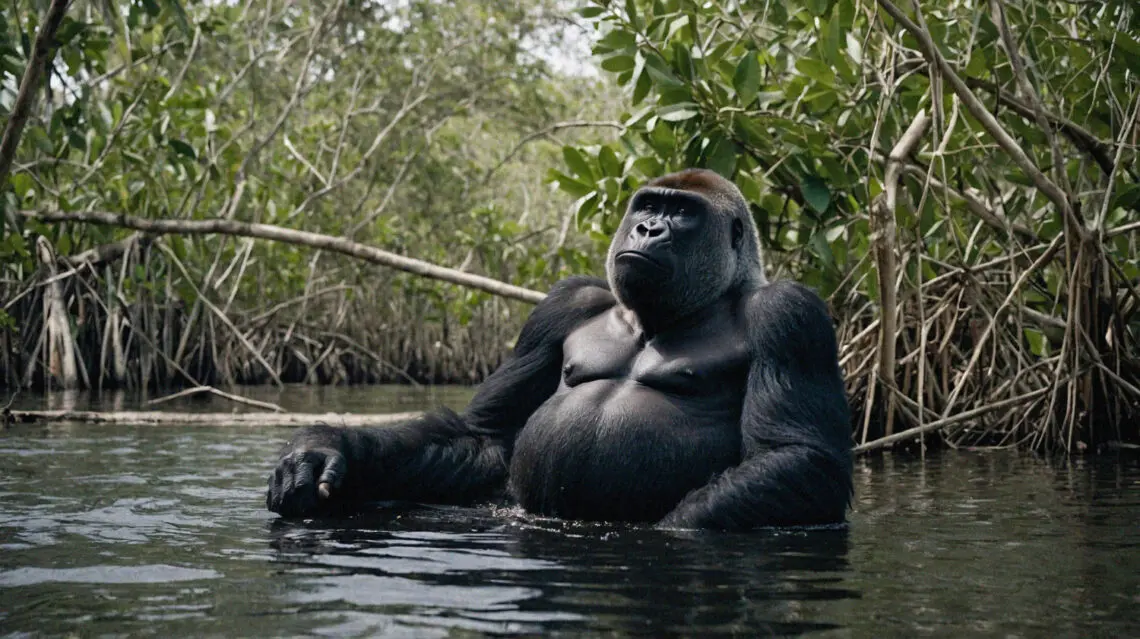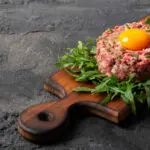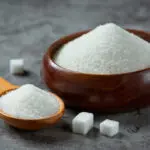The Shocking Truth About Plant Digestion
Here’s something that will fundamentally change how you think about pet nutrition:
There is no animal on the planet, visible to the naked eye, that can actually digest plant materials.
Not even herbivores.
Let that sink in for a moment. If cows, horses, and sheep—animals specifically designed to eat plants—can’t properly digest them without extraordinary anatomical adaptations, what does that mean for your dog or cat?
How Herbivores Actually “Digest” Plants
Let’s look at what it takes for an animal that’s actually designed to eat plants:
The Cow: Master of Plant Processing
Step 1: The Mouth
- Large, flat molars for grinding tough plant fibers
- Amylase in saliva starts breaking down carbohydrates immediately at first bite
- Plant-eating bacteria in saliva begin cellular breakdown before swallowing
- Methodical chewing ensures thorough mixing with enzymes
Step 2: The Stomach System
- Four separate stomach chambers (fermentation tanks)
- Massive bacterial populations that specialize in plant breakdown
- Rumination – food comes back up for re-chewing multiple times
- Extended processing time – food spends hours being broken down
Step 3: The Intestines
- Digestive tract 10 times body length (compared to 3-4x in carnivores)
- Continued bacterial action right until waste elimination
- Specialized enzymes for cellulose breakdown
Even with all these adaptations, cows still can’t digest all plant material. Much passes through undigested—that’s why cow patties contain recognizable plant matter.
The Impossible Expectation
Now consider what we expect from dogs and cats eating kibble:
We expect carnivores—with none of these plant-processing adaptations—to efficiently digest plant materials in the brief time it takes food to pass through their simple, short digestive tract.
It’s like expecting a race car to perform well off-road when it’s designed for smooth racetracks.
Your Pet’s Carnivore Digestive System
Anatomical Features of True Carnivores:
Teeth and Jaws:
- Sharp, pointed canine teeth for grabbing and holding prey
- Carnassial teeth that work like scissors to shear meat
- Large mouth opening with single hinge joint for swallowing large chunks
- No flat grinding molars for processing plant matter
- Designed to “wolf down” food whole, not chew extensively
Digestive Tract:
- Short, simple gastrointestinal tract (3-4 times body length)
- Single stomach chamber designed for rapid meat processing
- Highly acidic stomach (pH 1-2 vs. human pH 4-5) to break down protein and bone
- Rapid transit time – food passes through quickly
Digestive Enzymes:
- No amylase in saliva – cannot begin carbohydrate breakdown in mouth
- Protein-digesting enzymes only activated in stomach (would damage mouth tissue)
- Lipase for fat breakdown – highly efficient at processing animal fats
- Protease for protein breakdown – specialized for meat digestion
The Critical Enzyme Evidence
Here’s the smoking gun that proves dogs and cats are carnivores:
Herbivores and Omnivores:
- Produce amylase in saliva to begin plant digestion immediately
- Methodically chew food to mix with enzymes
- Start digestion at first bite because plant processing takes time
Dogs and Cats:
- Produce ZERO amylase in saliva
- Cannot begin plant digestion until food reaches intestines
- Food passes through half the digestive system contributing nothing nutritionally
Think about this: Plant matter travels through your pet’s mouth, down the esophagus, and sits in the stomach for 4-8 hours in a form that provides absolutely no nutrition. Only when it finally reaches the intestines do any plant-digesting mechanisms appear.
What Happens When Carnivores Eat Plants
Since dogs and cats can’t begin plant digestion until the intestines, here’s what occurs:
The Inefficient Struggle:
- Plant cell walls remain intact through mouth and stomach
- No bacterial fermentation chambers like herbivores have
- Limited time in intestines for complex plant breakdown
- Incomplete digestion – much passes through unprocessed
- Intestinal stress from trying to process inappropriate food
The Metabolic Burden:
- Pancreas works overtime producing extra enzymes
- Intestinal lining stressed from processing tough plant fibers
- Blood sugar spikes from rapid starch-to-sugar conversion
- Chronic inflammation from digestive system strain
Remember: Dogs and cats have zero plant-processing bacteria in their stomachs and no plant cell wall-reducing enzymes until the intestines. Yet we expect them to efficiently extract nutrition from plant-heavy kibble.
The Omega-3 Conversion Evidence
Here’s another piece of compelling evidence:
Plant vs. Animal Omega-3 Sources:
- Plant sources (ALA) must be converted to active forms (EPA/DHA)
- Animal sources already contain active EPA/DHA forms
Conversion Abilities:
- Herbivores/Omnivores: Efficiently convert plant ALA to EPA/DHA
- Cats: Completely lack conversion enzymes (0% conversion)
- Dogs: Can only convert 5-15% of plant ALA
If dogs were truly omnivores, why can they barely convert plant-based nutrients that omnivores handle easily?
The Digestive Transit Time Problem
Human digestion: Food spends ~30 minutes in stomach, long transit time in intestines Dog digestion: Food spends 4-8 hours in stomach, rapid transit through short intestines
This creates a problem with plant-heavy diets:
- Slow stomach phase provides no plant digestion
- Fast intestinal phase doesn’t allow time for complex plant breakdown
- Incomplete nutrient extraction from plant sources
- Increased waste production from undigested matter
Why “Tolerance” Isn’t Health
Many pet parents say, “But my dog does fine on kibble!” Here’s what’s really happening:
Survival vs. Thriving:
Just like the arctic foxes in research studies, dogs can survive on plant-heavy diets by:
- Producing backup pancreatic amylase (stress response, not normal function)
- Overeating to compensate for poor nutrient availability
- Adapting metabolically at the cost of optimal health
The Hidden Costs:
- Chronic digestive inflammation (even if not visible)
- Pancreatic stress from overproduction of enzymes
- Poor nutrient absorption despite adequate caloric intake
- Blood sugar instability from inappropriate carb levels
- Gut microbiome disruption from constant plant processing attempts
The Fiber Deception
Pet food companies emphasize fiber benefits, but here’s what they don’t tell you:
Natural carnivore fiber intake: Minimal amounts from prey gut contents (pre-digested plant matter) Commercial pet food fiber: Industrial waste products like:
- Beet pulp (sugar industry waste)
- Peanut shells
- Wood pulp (sawdust)
- Grain hulls
The problem: These industrial fibers weren’t designed for carnivore digestive systems and can:
- Inhibit nutrient absorption
- Create artificial bulk (making you think large stools are healthy)
- Stress the digestive system
- Replace space for appropriate nutrition
What Your Pet’s Digestive System Actually Wants
Ideal carnivore nutrition:
- High-quality animal proteins that break down efficiently
- Animal fats for energy and fat-soluble vitamins
- Organs and glands for concentrated nutrients
- Raw bones for minerals and dental health
- Minimal plant matter (if any) in pre-digested form
Signs of appropriate digestion:
- Small, firm, less odorous stools (efficient nutrient extraction)
- Stable energy levels (no blood sugar roller coaster)
- Good dental health (natural cleaning from appropriate textures)
- Healthy skin and coat (proper nutrient absorption)
- Stable weight (natural satiety signals)
The Bottom Line: Anatomy Is Destiny
Your pet’s digestive system hasn’t changed in thousands of years of domestication. Every anatomical feature—from teeth to intestinal length—is designed for processing animal-based nutrition.
When we feed carnivores like herbivores:
- We stress systems not designed for plant processing
- We create chronic inflammation and digestive burden
- We provide incomplete nutrition despite adequate calories
- We set the stage for the chronic diseases we see today
The solution isn’t better plant processing or more enzymes—it’s feeding according to biological design.
In our next article, we’ll explore one of the most controversial topics in pet nutrition: carbohydrates. We’ll examine why the “omnivore dog” argument falls apart when you understand what high-carb diets actually do to carnivore metabolism.
Key Takeaways:
✓ No animal can truly “digest” plants without extensive anatomical adaptations
✓ Dogs and cats have ZERO plant-processing enzymes in their saliva
✓ Plant matter provides no nutrition for half the digestive journey
✓ Herbivores need 4 stomach chambers and 10x body length intestines to process plants
✓ Carnivores have short, simple digestive tracts designed for meat
✓ “Tolerance” of plant foods doesn’t equal optimal health
✓ Industrial fiber in pet food is waste, not nutrition
Carnivore Digestive Features:
- Sharp, pointed teeth for tearing (not grinding)
- Highly acidic stomach (pH 1-2) for protein breakdown
- Short intestinal tract (3-4x body length) for rapid processing
- No amylase in saliva – cannot begin plant digestion
- Single stomach chamber – no fermentation system
- Rapid transit time – inappropriate for complex plant breakdown
Next in this series: “Carbohydrates in Pet Food: How Much Is Too Much and Why It Matters”





